Self-guided Walk Herengracht and Around
This self-guided Amsterdam City Walk shows you the highlights of Amsterdam China Town and the only Bhuddist Temple in the Netherlands. You will walk along Herengracht lined with seventeenth-century canal mansions. You will also see Amsterdam’s smallest house, and the only only 2.5 m (8.2 ft) wide.
Herengracht
Herengracht canal rings the city centre, linking Brouwersgracht in the north and the Amstel River in the south. The Herengracht was dug in 1612. Together with Prinsengracht and Keizersgracht, it provided housing for Amsterdam’s fast growing population. Wealthy merchants and gentlemen of independent means settled in the lavishly decorated canal-side mansions. Today, many of houses along Herengracht are too large for families to live in. They now function as offices for banks, lawyers and architects. With less hustle and bustle than in the city centre, Herengracht is one a favourite canals for a leisure stroll.
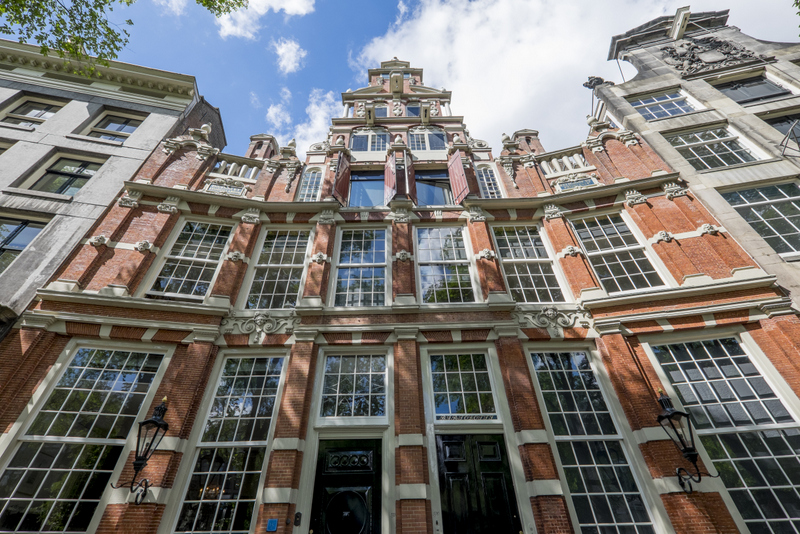
Self-guided Walk Herengracht
START: Zeedijk
FINISH:Raadhuisstraat
This walk starts at Zeedijk, the main street in Amsterdam’s tiny China Town, is sprinkled with Chinese, Thai and Vietnamese food treats. Right at the beginning of Zeedijk at No 1 is in ‘t Aepjen, a pub housed in a wooden medieval house.
At No 206, the Fo Guang Shan He Hua Temple, the largest Buddhist temple in Europe and built in traditional Chinese style. If you are here on a Saturday afternoon, you can join the guided tour and the tea ceremony afterwards.
At No 143, Eetcafe Latei, for a cappuccino and a quick bite. Rummage through the second-hand goods because the place doubles as bric-a-brac store. Everything is for sale from the chair you are sitting on to the clock on the wall.
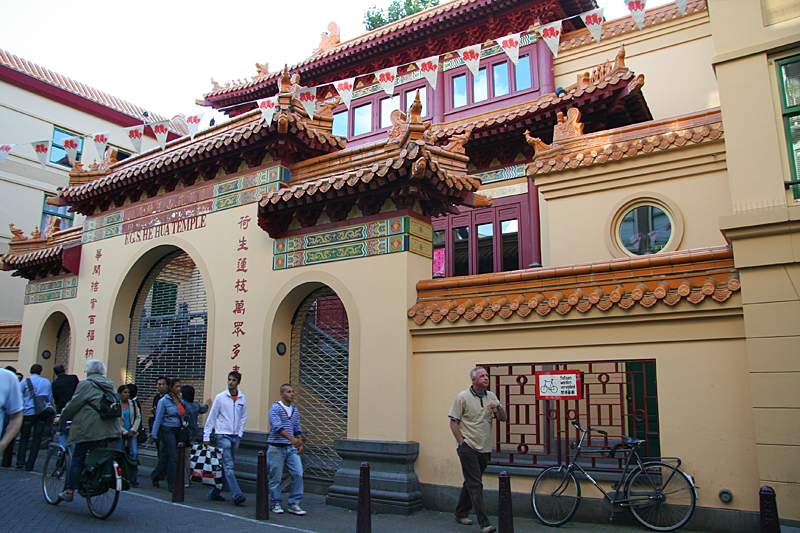
Continue across Nieuwmarkt to Kloveniersburgwal. Stop for a moment at No 29, Trippenhuis, Amsterdam’s widest house, 9 m (30ft) across. The house was built for the two brothers Trip who controlled all Europe’s munitions supplies in the seventeenth century. The chimneys resemble cannons and military insignia pepper the gun-powder grey exterior.
The Trip’s coachman lived at Klovenierswal No 26. This house is Amsterdam’s narrowest house, only 2.5 m (8.2 ft) wide. Reportedly their coachman grumbled that he would be happy with a house the size of the Trip’s front door; that’s what he got.
Keep the canal of Kloveniersburgwal on your right. Cross Halvemaansbrug, turn left and walk along the Amstel River until you get to Blauwbrug. Blue Bridge, it is not blue at all, but named after an earlier wooden bridge that was painted dark blue. The present bridge was built in 1874, and inspired by Alexandre III bridge in Paris, France.
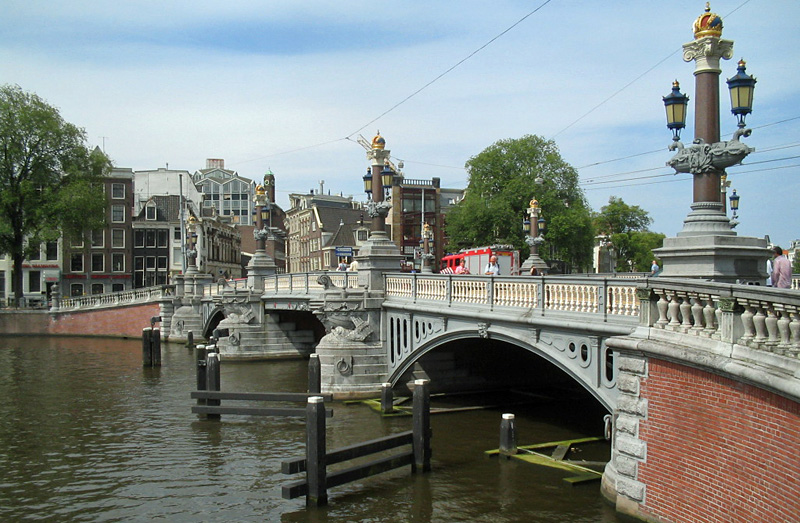
Stand on the bridge for a wonderful view of the Amstel River. To the north is the Stopera complex housing the town hall and Muziektheater. Looking south, you see Magere Brug, or Skinny Bridge, one of the most photographed bridges in Amsterdam.
Continue to Amstelstraat (continuation of Blauwbrug) and walk to the end of Amstelstraat, turn left into Utrechtsestraat, then right to Herengracht. Stop for a moment at No 605, Museum Willet-Holthuysen, if you want a glimpse of life in seventeenth century Amsterdam.
Continue as far as the bridge that spans Reguliersgracht and Herengracht. Stand on the bridge for a spectacular view of fifteen bridges. Six arched bridges in a row stretch in front of you. On your left, you see six more bridges across Herengracht. On your right there are another two. The fifteenth bridge is the one on which you are standing.
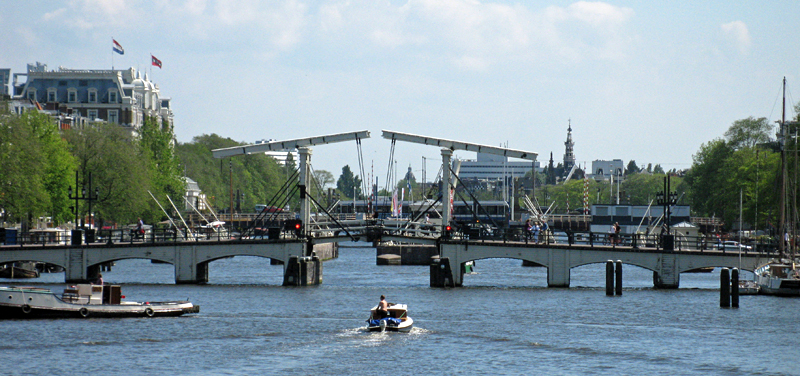
Continue on Herengracht until you get to No 502, the house with the pillars, the official residence of the Mayor of Amsterdam. The memorial tablet in front of the house reminds of the plight of the slaves. In the sixteenth century, Paul Godin lived here. He was the head of the Dutch West Indian Company and a slave trader.
At Nos 508 -510, two houses with twin neck gables sporting sea gods and tritons. The gods sit on dolphins while half human, half fish and resound their horns to abate the storm. In seventeenth century Amsterdam gables were status symbols. Land was in short supply and house owners were taxed according to the width of their house front. Adding a high gable was a way to show one’s wealth.
Cat Lovers will purr at the art collection of cat statuettes, cat portraits, cat paintings, cat pop art and cat artefacts in Het Kattenkabinet, The Cat Museum, at Herengracht 497.
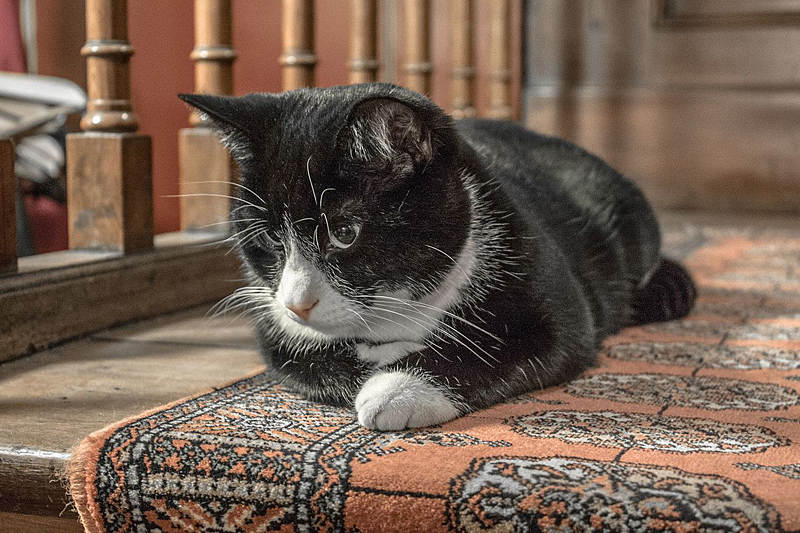
The De Vicq House, Herengracht 476, is a 17th-century double house. Statues of Mercury, Venus and a spying eagle look down on to the street. If you think this house has grand steps to the front door, walk on to number 480 to see an even grander one.
Amsterdam’s most desired canal houses cluster around the Gouden Bocht – the Golden Bend. This curve of Herengracht between Vijzelstraat and Leidsestraat is the stretch where in the 17th century wealthy merchants built their lavish homes.
Continue down Herengracht to No 380, built in the style of a French castle mansion. Frolicking cherubs festoon the bay windows and reclining figures grace the gable. It is the home of The Netherlands Institute for War Documentation. Its three-kilometre archives houses war documents and included Anne Frank’s diary. On 3 May 2010, the journal went to the Anne Frank House. The diary is on permanent display in the Diary Room, built for the sixtieth anniversary of the Anne Frank House.
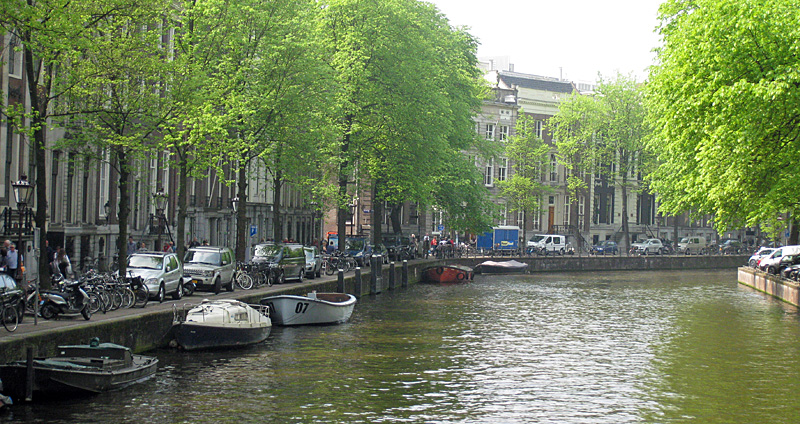
Herengracht 366 – 368 was built for Jacob Cromhout, whose family name translates as ‘warped wood’. This is exactly what you see carved in the gable stone; a crooked wood log. The only way to see the impressive interior and two seventeenth century kitchens is to visit the Biblical Museum housed in the building.
At No 170, the ‘house with the bright colours’ as it is sometimes referred to. Willem van den Heuvel, influential and rich, commissioned Hendrick de Keyser, Amsterdam’s most celebrated architect to design a dwelling that fitted Van den Heuvel’s status. Van den Heuvel inherited a handsome sum of money from his Italian great-uncle. To honour him, Van den Heuvel changed his first name into Guillelmo and adopted his uncle’s family name, Bartolotti.
Retrace your steps and turn right into Raadhuisstraat. Italian Eetcafé, Il Panorama, across the road serves tasty pizzas, tantalizing pasta dishes and delectable crusty rolls filled with goat cheese smothered in honey and topped with crispy apple.
Hop on tram 17 which takes you to Central Station
Next article: Amsterdam City Walk: Red Light District
Previous article: Trippenhuis where a wealthy merchant lived



